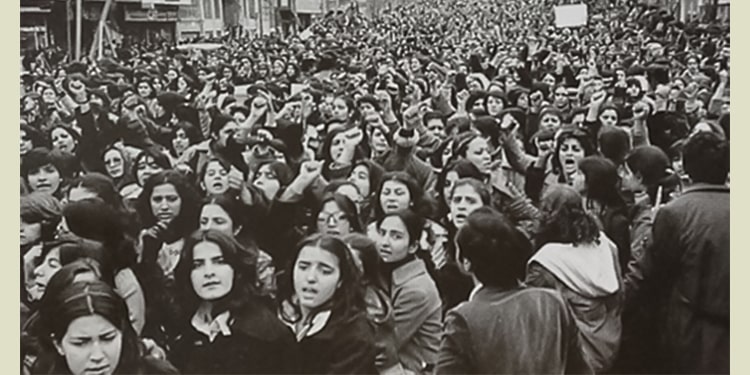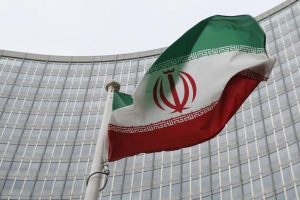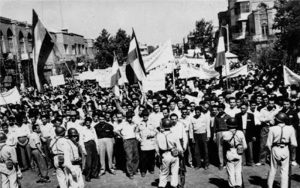The history of Iran is a tapestry woven with threads of resilience, courage, and an unwavering commitment to sovereignty. From ancient times through the Iran-Iraq War (1980–1988) and the recent Twelve-Day War with Israel in June 2025, the resistance of the Iranian nation has stood as a testament to its enduring spirit.
This article explores Iran’s historical defiance, focusing on its struggles against external aggression, its triumph in the eight-year Sacred Defense, and its resolute response in the Twelve-Day War.
The Resistance of the Iranian Nation in Ancient Times
The resistance of the Iranian nation traces its roots to antiquity, when the Persian Empire faced formidable adversaries yet maintained its sovereignty through strategic brilliance and unity.
Under the Achaemenid dynasty (550–330 BCE), Cyrus the Great and Darius I repelled invasions while expanding Persian influence, establishing a legacy of resilience.
The Battle of Thermopylae in 480 BCE, though a Greek narrative, showcased Persian determination against overwhelming odds.
Later, the Parthian and Sassanian empires resisted Roman incursions, with victories like the Battle of Carrhae (53 BCE) demonstrating Iran’s military prowess.
This early defiance against foreign domination laid the foundation for a national ethos of standing firm, a trait that continues to define Iran’s identity.
Medieval Struggles and Cultural Endurance
In the medieval era, Iran faced invasions by Arab, Mongol, and Turkic forces, yet the resistance of the Iranian nation preserved its cultural and political identity.
The Arab conquest in the 7th century introduced Islam, but Iranians adapted, integrating Persian traditions into the new faith, notably through the Shia revival under the Safavid dynasty (1501–1736).
The Mongol invasions of the 13th century devastated Iran, yet figures like Jalaluddin Khwarazmshah led fierce resistance, ensuring the survival of Persian culture.
The Safavids later unified Iran, defending it against Ottoman and Uzbek threats, reinforcing a national consciousness rooted in independence and resilience. you can read more about this topic here.
Modern Era: Confronting Imperial Ambitions
The 19th and 20th centuries saw Iran navigating colonial pressures from Britain, Russia, and later the United States, with the resistance of the Iranian nation shaping its response.
The Tobacco Protest of 1891–1892, led by merchants and clerics, forced the Qajar dynasty to cancel a British tobacco monopoly, showcasing popular defiance.
The Constitutional Revolution (1905–1911) further demonstrated Iran’s resolve to establish sovereignty through democratic ideals, despite foreign interference.
The 1953 coup, orchestrated by the CIA and MI6 to overthrow Prime Minister Mohammad Mossadegh, was a setback, but the Iranian people’s resistance to foreign-backed oppression fueled the 1979 Islamic Revolution, a pivotal moment of reclaiming national destiny.
The Sacred Defense: Iran-Iraq War (1980–1988)
The Iran-Iraq War, known in Iran as the Sacred Defense, is a defining chapter in the resistance of the Iranian nation.
In September 1980, Iraq, under Saddam Hussein, invaded Iran, aiming to seize the oil-rich Khuzestan province and weaken the newly established Islamic Republic.
Backed by Western powers and Arab states, Iraq’s aggression was met with fierce resistance from Iranian forces and civilians alike.
Despite initial setbacks, including the loss of Khorramshahr, Iran’s counteroffensives, such as Operation Samen-ol-Aemeh (1981) and Operation Beit-ol-Moqaddas (1982), liberated key territories.
Volunteers, including the Basij militia, played a crucial role, with millions rallying to defend the homeland.
Iran’s resilience, despite facing chemical weapons and international isolation, forced a UN-brokered ceasefire in 1988, preserving its territorial integrity.
The Twelve-Day War: Iran’s Response to Israel (2025)
The Twelve-Day War in June 2025 marked a modern testament to the resistance of the Iranian nation.
Initiated by Israel’s preemptive strikes on Iran’s nuclear and military facilities, the conflict saw Iran launch a robust counterattack, deploying over 550 ballistic missiles and 1,000 drones.
These strikes targeted Israeli military bases, civilian infrastructure, and strategic sites, including the Weizmann Institute and Soroka Hospital, causing significant disruption.
Despite Israel’s advanced air defenses, Iran’s missiles penetrated, demonstrating technological prowess and strategic depth.
The IRGC’s rapid response, even after losing key commanders, showcased Iran’s ability to withstand aggression and retaliate effectively, reinforcing its deterrence posture in a volatile region.
Domestic Unity and National Pride
The resistance of the Iranian nation has consistently unified its diverse population across ethnic and social lines.
During the Iran-Iraq War, Iranians from all walks of life—Persians, Kurds, Azeris, and others—rallied under the banner of national defense, with women contributing significantly as medics, logisticians, and propagandists.
The 1979 Revolution galvanized this unity, transforming Iran into a self-reliant state despite Western sanctions.
In 2025, the Twelve-Day War further solidified national pride, as state media broadcast images of Iran’s missile strikes, framing them as a response to unprovoked aggression.
Public support for the IRGC and the government surged, reflecting a collective resolve to protect sovereignty.
International Perception and Geopolitical Impact
Globally, the resistance of the Iranian nation has elicited mixed reactions. During the Iran-Iraq War, Western powers supported Iraq, yet Iran’s ability to withstand a better-equipped adversary earned respect in the Global South.
In 2025, Iran’s retaliation against Israel drew condemnation from the U.S. and its allies but garnered support from nations like China, Russia, and members of the Axis of Resistance.
Iran’s strike on the U.S. base at Al Udeid in Qatar during the Twelve-Day War signaled its willingness to confront Western powers, enhancing its regional influence.
The narrative of resilience, rooted in historical defiance, positions Iran as a symbol of resistance against imperialism for many non-aligned nations.
Challenges and Future Prospects
Despite its successes, the resistance of the Iranian nation faces challenges, including economic strain from sanctions and the need to modernize its conventional forces.
The reliance on asymmetric warfare, such as drones and missiles, has proven effective, as seen in the Twelve-Day War, but vulnerabilities in supply chains for advanced components persist.
Looking forward, Iran’s investment in knowledge-based industries and youth-driven innovation, evident in its drone program, suggests a path toward greater self-sufficiency.
The legacy of the Sacred Defense and recent conflicts will continue to shape Iran’s military strategy, emphasizing resilience and deterrence in an unstable region.
Conclusion
The resistance of the Iranian nation is a historical saga of defiance, from the ancient Persian Empire to the Sacred Defense and the Twelve-Day War.
Through invasions, colonial pressures, and modern conflicts, Iran has consistently defended its sovereignty, culture, and independence.
The Iran-Iraq War showcased the unity of its people against overwhelming odds, while the 2025 conflict with Israel demonstrated its technological and strategic advancements.
As Iran navigates a complex geopolitical landscape, the resistance of the Iranian nation remains its greatest asset, a legacy of courage that continues to inspire and shape its future.
Whether facing ancient foes or modern adversaries, Iran’s unwavering spirit ensures it will stand firm, safeguarding its place in the world.
source: raialkhalij



